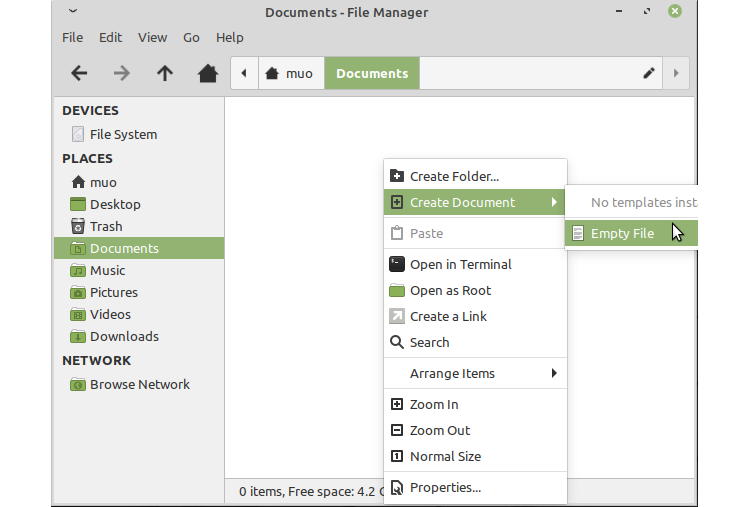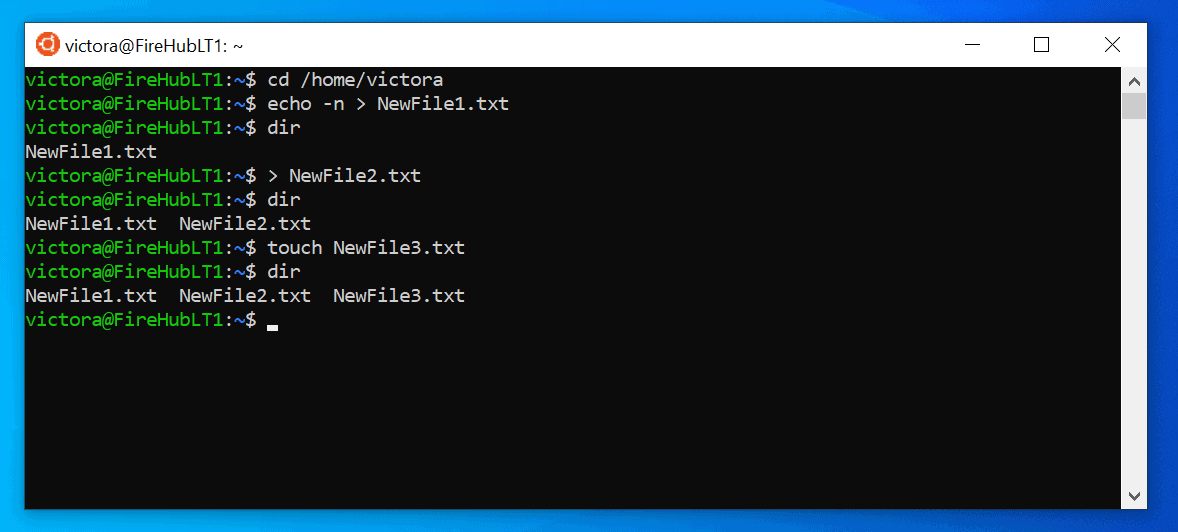
However it is important to note here that this command is slower than fallocate and truncate command as it takes lot of time in I/O operations. Here we are increasing the size of output file called largefile by writing the blocks from input /dev/zero file to a count of 8G and using the block size of 4k. You might have used this command to backup your hard disk data. Using dd command, the blocks from the input file will be written to the output file. This is one of the famous method in Linux which is probably in use from last couple of years.

You can verify the size of the file by using du -sh largefile command as shown below. Here we are creating an 8G file name largefile using fallocate -l 8G largefile command. You can use fallocate -l syntax to create a large file. This is probably the quickest way to create a large file.
Make new file in linux how to#
So for all those cases, we will see some of the easily available tools that can accomplish this task with ease.Īlso Read: How to Install libomp-dev on Ubuntu 20.04 LTS (Focal Fossa) Method 1: Using fallocate command Similarly, there might be some other use case that requires you to create a large file in your Linux System.

So in cases like this you can quickly create a large dummy file to test your disk monitoring application.

If you don't have much data in your System then it will be difficult to test the disk monitoring functionality. One of the possible situation could be to test the disk space monitoring tools if working properly or not. There could be many situations which requires you to create a large file in Linux. In this article, we will see how to create a large file in Linux using 4 simple and easy methods.


 0 kommentar(er)
0 kommentar(er)
